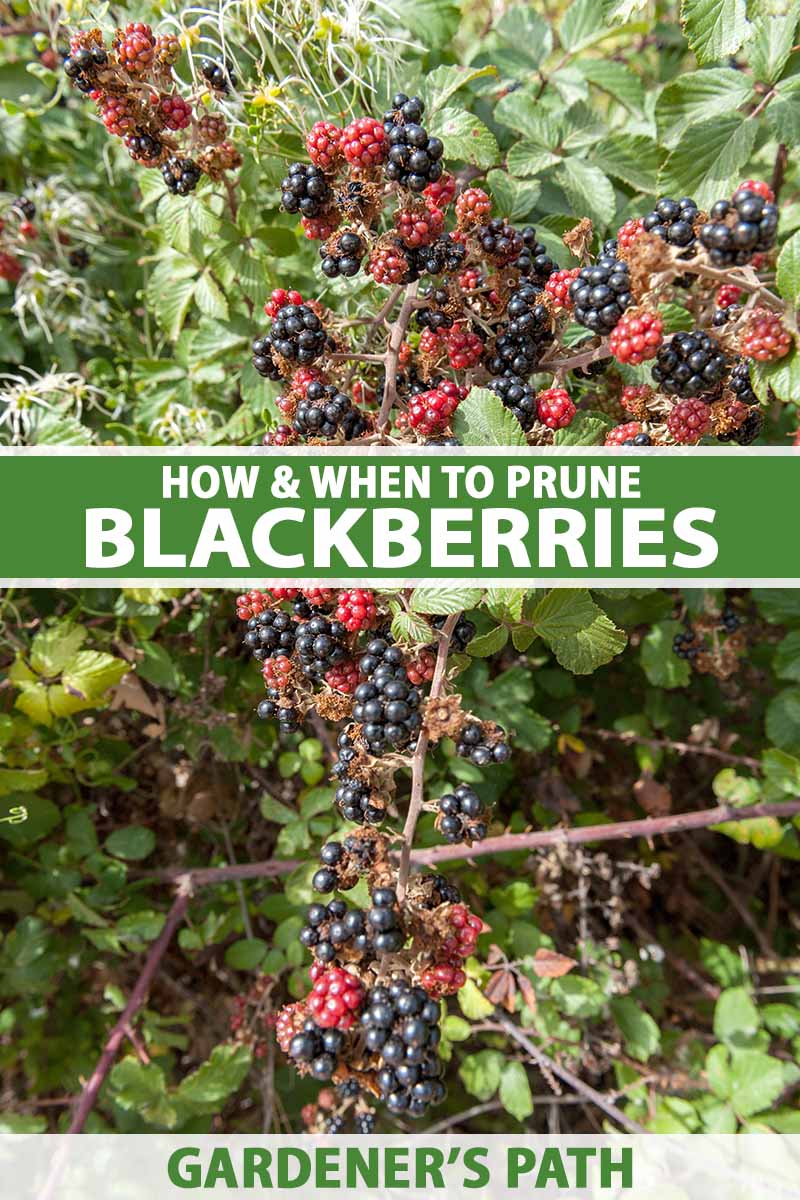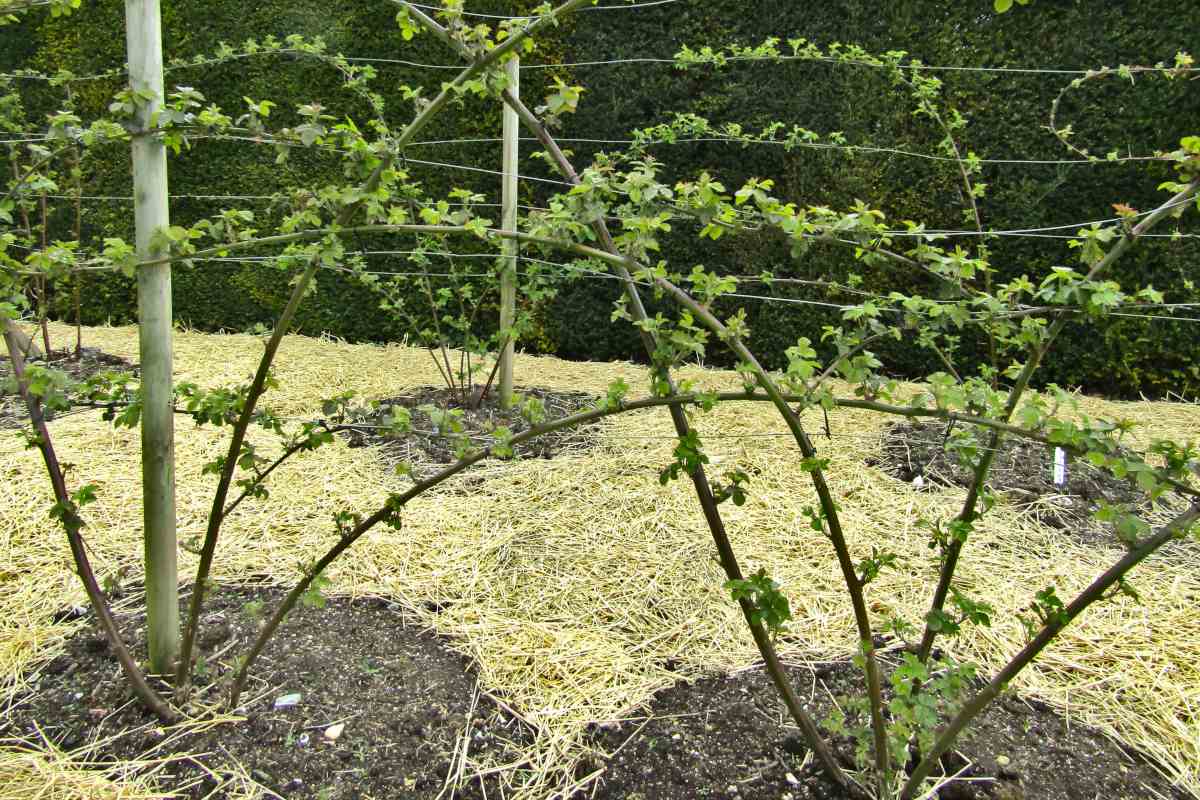The Basics of Blackberry Pruning: Why It’s Essential
Pruning is a crucial aspect of blackberry plant care, and understanding its importance is vital for a bountiful harvest. When done correctly, pruning can promote healthy growth, increase yields, and reduce disease susceptibility. Blackberry plants that are not pruned regularly can become overgrown, leading to reduced fruit production and a higher risk of disease. By pruning, you can control the shape and size of your blackberry plants, allowing for better air circulation and sunlight penetration. This, in turn, can help to prevent diseases such as powdery mildew and botrytis. Furthermore, pruning can help to increase the quality of your blackberry harvest, as it encourages the plant to focus its energy on producing fruit rather than vegetative growth. So, how do you prune blackberries to achieve these benefits? It all starts with understanding the basics of blackberry pruning. Proper pruning techniques can make all the difference in the success of your blackberry crop, and with the right knowledge, you can enjoy a bountiful harvest for years to come.
Understanding Blackberry Plant Anatomy: A Pruner’s Guide
To effectively prune blackberry plants, it’s essential to understand the different parts of the plant and how they relate to the pruning process. A blackberry plant consists of three main components: primocanes, floricanes, and laterals. Primocanes are the new canes that grow from the crown of the plant during the current growing season. These canes will produce fruit the following year. Floricanes, on the other hand, are the canes that produced fruit the previous year and will not produce fruit again. Laterals are the side shoots that grow from the floricanes and produce fruit. Understanding the role of each component is crucial in determining how to prune blackberry plants to promote healthy growth and maximize yields. By identifying and pruning the correct canes, you can encourage the plant to focus its energy on producing fruit rather than vegetative growth. This knowledge will serve as a foundation for developing effective pruning techniques and achieving a bountiful harvest.
How to Prepare Your Blackberry Plants for Pruning
Before diving into the pruning process, it’s essential to prepare your blackberry plants to ensure a successful and healthy pruning experience. To start, gather your pruning tools, including sharp, clean, and disinfected pruning shears or loppers. Cleaning and disinfecting your tools will help prevent the spread of diseases from one plant to another. Next, inspect your blackberry plants for any dead, damaged, or diseased canes. Remove these canes to prevent the spread of disease and encourage healthy growth. This step is crucial, as it will make the pruning process more efficient and effective. Additionally, removing dead or damaged canes will help you identify the healthy canes that will produce fruit, making it easier to determine how do you prune blackberries for optimal yields. By taking the time to prepare your blackberry plants, you’ll set yourself up for success and ensure a bountiful harvest.
Pruning Techniques for Blackberries: A Step-by-Step Guide
Now that you’ve prepared your blackberry plants for pruning, it’s time to dive into the pruning process itself. To prune blackberry plants effectively, follow these step-by-step instructions. First, identify the primocanes, which are the new canes that grew during the current growing season. These canes will produce fruit next year, so it’s essential to preserve them. Next, identify the floricanes, which are the canes that produced fruit this year. These canes will not produce fruit again, so they can be removed. Remove any weak, spindly, or damaged canes, as they will not produce fruit and can harbor diseases. Cut the canes at the base, making a clean cut just above a bud or a lateral branch. This will help the plant heal quickly and reduce the risk of disease. When pruning, aim to leave around 3-5 strong, healthy canes per plant, spaced evenly apart. This will allow for good air circulation and sunlight penetration, promoting healthy growth and fruit production. By following these steps, you’ll be able to prune your blackberry plants effectively, answering the question of how do you prune blackberries for optimal yields. Remember to prune your blackberry plants annually to maintain their health and productivity.
Pruning for Different Blackberry Varieties: What You Need to Know
While the general principles of pruning blackberries remain the same, different varieties may require specific pruning techniques. Thorny blackberry varieties, such as ‘Brazos’ and ‘Navaho’, tend to be more vigorous and produce more canes than thornless varieties. As a result, they may require more aggressive pruning to maintain their shape and promote fruiting. Thornless blackberry varieties, such as ‘Apache’ and ‘Arapaho’, are generally less vigorous and may require less pruning. However, they still benefit from regular pruning to promote healthy growth and fruit production. When pruning thorny blackberry varieties, it’s essential to wear protective clothing, including long sleeves and gloves, to avoid injury. Additionally, some blackberry varieties, such as ‘Eclipse’ and ‘Obsidian’, are considered “primocane-fruiting” varieties, meaning they produce fruit on the current year’s growth. These varieties require a slightly different pruning approach, as the canes that produced fruit will not produce again. By understanding the specific pruning needs of your blackberry variety, you’ll be able to answer the question of how do you prune blackberries for optimal yields and enjoy a bountiful harvest.
Common Pruning Mistakes to Avoid with Blackberries
When it comes to pruning blackberry plants, there are several common mistakes to avoid in order to ensure a healthy and productive harvest. One of the most critical mistakes is over-pruning, which can stress the plant and reduce yields. This can occur when too many canes are removed, leaving the plant with insufficient growth to support fruit production. On the other hand, under-pruning can also be detrimental, as it can lead to a tangled and unproductive plant. Another common mistake is pruning at the wrong time of year. Pruning during the active growing season can cause the plant to redirect its energy from fruit production to new growth, reducing yields. Similarly, pruning during the dormant season can cause the plant to bleed sap, weakening its overall health. Additionally, failing to disinfect pruning tools can spread diseases from one plant to another, further compromising the health of the blackberry patch. By understanding these common mistakes and taking steps to avoid them, you’ll be able to answer the question of how do you prune blackberries for optimal yields and enjoy a bountiful harvest. Remember, proper pruning techniques are essential for promoting healthy growth, increasing yields, and reducing disease susceptibility in blackberry plants.
The Best Time to Prune Blackberries: A Seasonal Guide
Timing is everything when it comes to pruning blackberry plants. Pruning at the right time of year can make all the difference in promoting healthy growth, increasing yields, and reducing disease susceptibility. In general, there are two optimal times to prune blackberry plants: during the dormant season and during the growing season. During the dormant season, typically from late winter to early spring, pruning can help to remove dead, damaged, or diseased canes, and shape the plant for optimal growth. This is also a good time to remove any weak or spindly growth, as well as any canes that are crossing or rubbing against each other. During the growing season, pruning can help to promote fruiting and encourage the plant to produce more berries. This is typically done in the summer months, after the plant has finished producing fruit. When pruning during the growing season, it’s essential to be careful not to remove too much of the plant’s foliage, as this can reduce yields. By understanding the best times of year to prune blackberry plants, you’ll be able to answer the question of how do you prune blackberries for optimal yields and enjoy a bountiful harvest. Remember, proper pruning techniques and timing are essential for promoting healthy growth and increasing yields in blackberry plants.
Tips for Maintaining Your Blackberry Plants After Pruning
After pruning your blackberry plants, it’s essential to provide proper care to ensure they thrive and produce a bountiful harvest. One of the most critical steps is to provide adequate water and nutrients. Blackberry plants require consistent moisture, especially during the first year after pruning. Water them deeply once or twice a week, depending on weather conditions. Additionally, fertilize your blackberry plants annually with a balanced fertilizer to promote healthy growth and fruit production. It’s also crucial to monitor your plants for pests and diseases, such as aphids, spider mites, and powdery mildew. Regularly inspect your plants and take action promptly if you notice any signs of infestation or infection. By following these tips, you’ll be able to answer the question of how do you prune blackberries for optimal yields and enjoy a successful harvest. Furthermore, maintaining a clean and organized blackberry patch can also help prevent the spread of diseases and pests. Remove any debris or weeds that may be harboring pests or diseases, and dispose of them properly. By taking these steps, you’ll be able to enjoy a healthy and productive blackberry patch for years to come.








